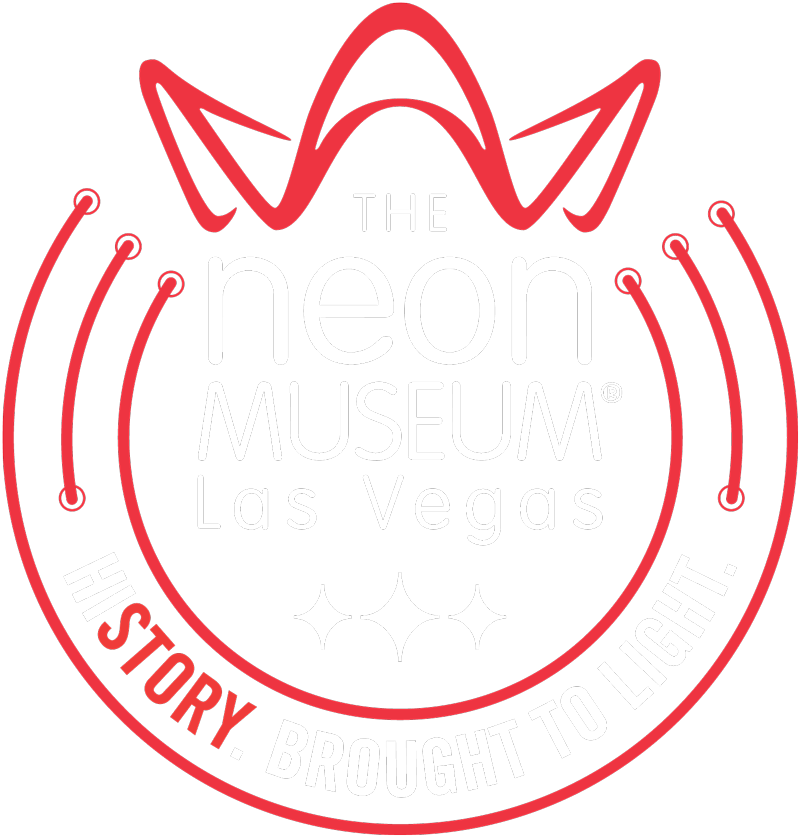Dr. Michael Green wraps up our first week of #WhyIGiveTNMLV.
 Q & A with Dr. Michael Green, The Neon Museum Member
Q & A with Dr. Michael Green, The Neon Museum Member
Q: When/how did you get involved with The Neon Museum?
A: I was aware of The Neon Museum, or what would be The Neon Museum, before it was there, thanks to the efforts of those involved in creating it. They included Dorothy and Frank Wright, both friends who were wonderful contributors to and chroniclers of the Las Vegas past. From there, I was happy to join when I could, and I have done occasional programs there over the years.
Q: What attracted you to the museum?
A: Let's start with the fact that it's a great museum. It was so smart to preserve neon in the first place (and difficult, of course). But it tells part of the Las Vegas story in a different way. While neon isn't unique to Las Vegas, it is an important part of our history and culture, because it also is an art form. I also liked that the museum was downtown, pretty much in the heart of things.
Q: Why do you give to The Neon Museum? What motivates you to stay involved?
A: I joined, and stay involved, because it's part of what I do. I am a history professor who writes and teaches about – among other things – Las Vegas. I feel I should be involved, and I am glad to be. I also know that opening and then maintaining a museum is no easy task.
Q: Do you have an anecdote about the museum you would like to share?
A: I can mention a couple of things. One was moderating a panel involving performers from the Moulin Rouge. To paraphrase Dr. Seuss, oh, the stories you'll hear! But on a personal level, my father was a Blackjack dealer at the Stardust during the age of Lefty Rosenthal. I was happy when the museum made T-shirts available based on the Stardust, and I took a lot of pleasure in giving him one for his birthday –which happened to be May 15th, the date considered the founding date of Las Vegas.
Q: In your opinion, what is the most important work that The Neon Museum does?
A: The most important work is preserving and interpreting an important part of the Las Vegas past – the neon, and also the La Concha Motel. In doing this work, the museum provides the public with great exhibits and programming.
Q: What do you hope the organization will achieve over the next ten years?
A: I hope it's bigger and better, that it grows beyond where it is now, that it will have even more signs, and that more stories can be told by those signs.
Q: Who do you think would enjoy a visit to The Neon Museum?
A: I find it hard to imagine anyone not enjoying a visit to the museum, frankly, unless it's about 110 degrees outside. That's the one problem with an outdoor museum, but we are supposed to be able to adapt. I think it's a great learning tool for kids – the signs are eye-catching.
Q: What’s your favorite sign and why?
A: I would find it hard to choose between the Stardust and the Moulin Rouge. Stardust, of course, for personal reasons I've mentioned, and other connections I have to the hotel's history through friends and family. The Moulin Rouge represents so much to the local community, and the Black community in particular, and we do not have much left of the building itself, so it's great that The Neon Museum has that sign, though neon artist Betty Willis is much better known for designing another famous sign on the Strip.
Dr. Green professor, Department of History, University of Nevada, Las Vegas, moderated a discussion about Stardust Showgirls at The Neon Museum in 2013.

